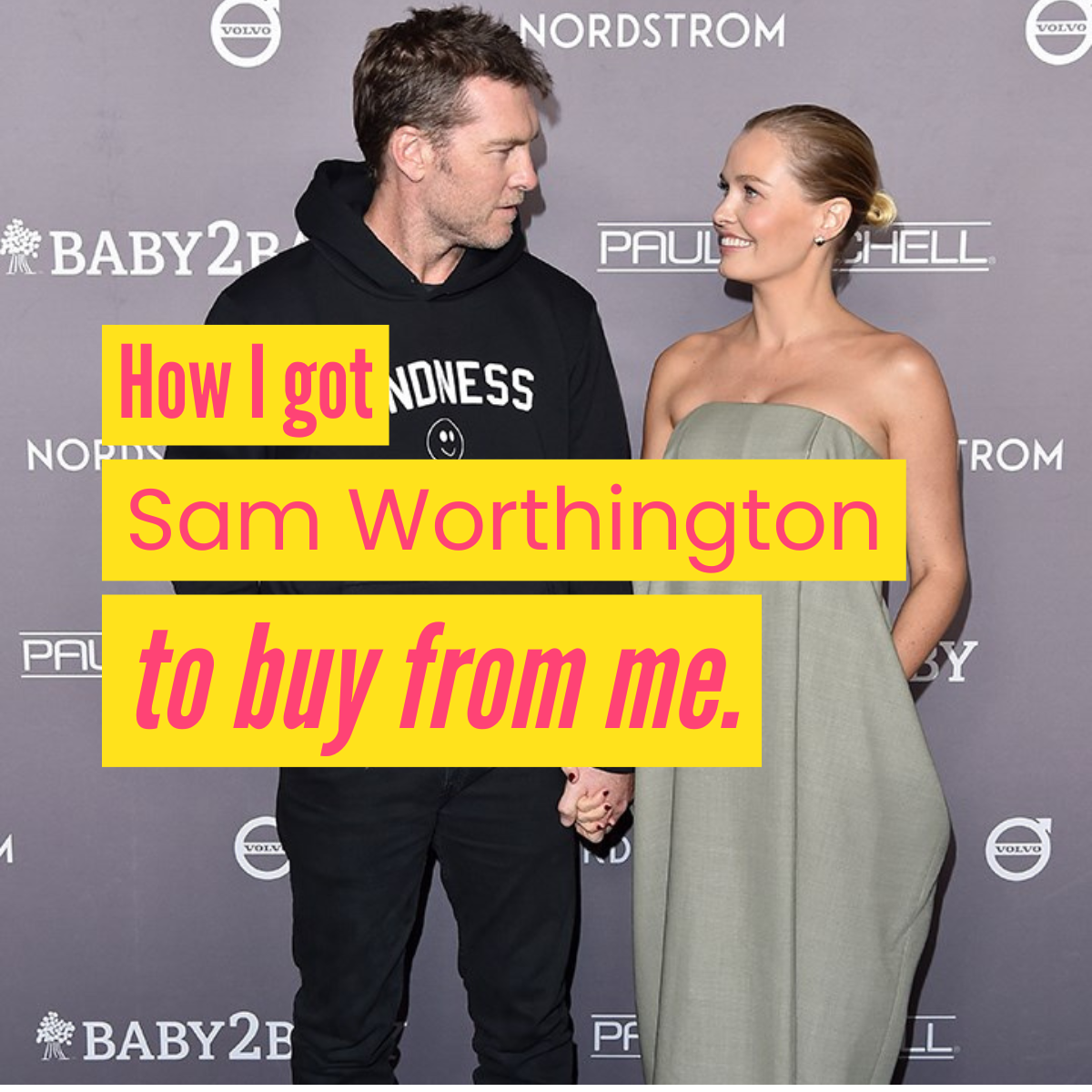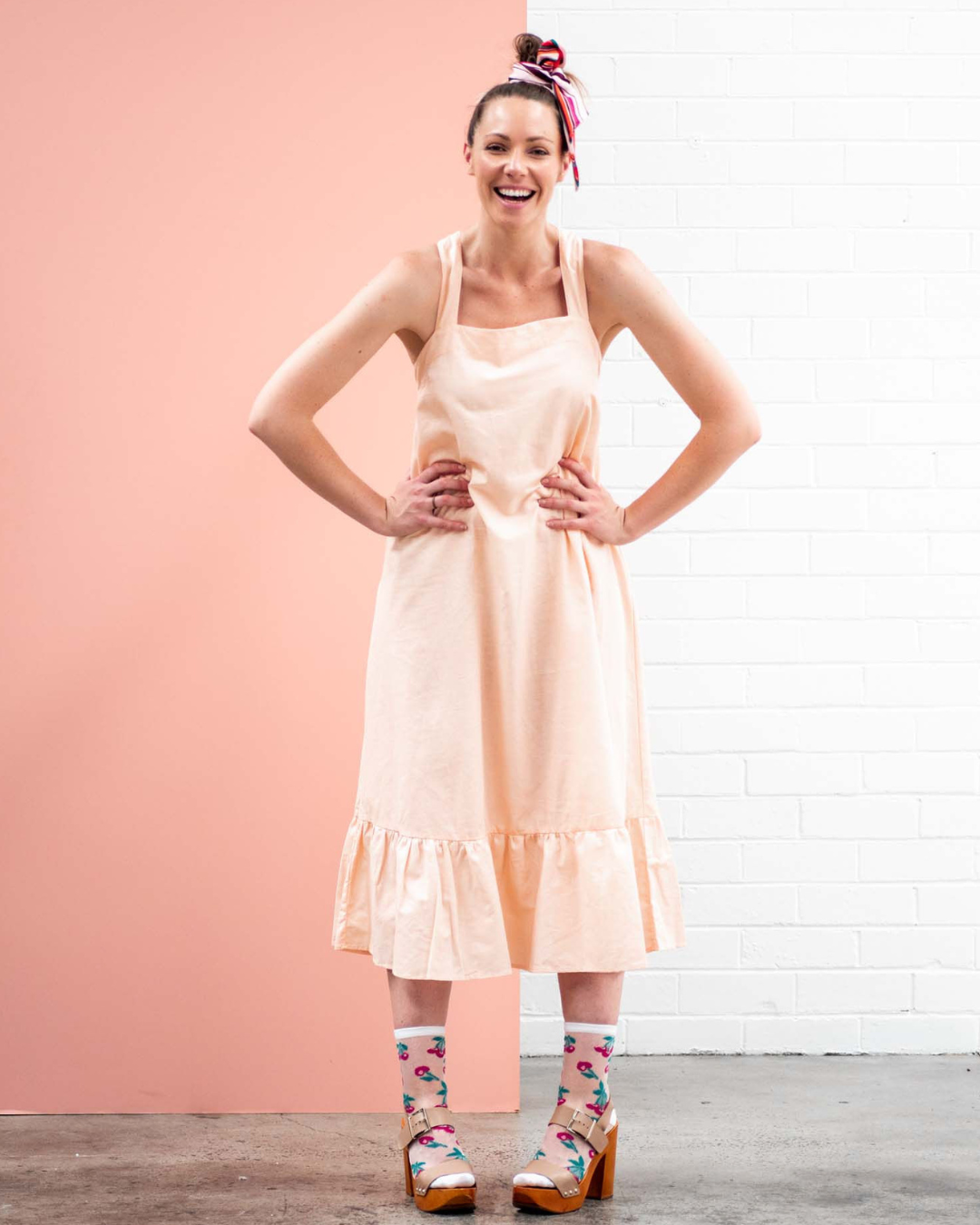Until recently, Clare Press was one of the inspirational women on my 'must meet' bucket list. Her name was penned alongside Carla Zampatti, Iris Apfel and Jenny Khee, but she now resides on my ‘most amazing women I’ve met’ list.
When I met Ms Press at the Melbourne launch of her most recent book, Rise & Resist, she was exactly as I thought she’d be: beautiful, very English, hilarious, honest, and nonchalant about her celebrity status. You'd be hard pressed to find a fashionista that hasn't heard of her, or a fashion label that doesn't aspire to have her pen their name. She's very much an eco-buff, and when it comes to fashion and sustainability, she’s the queen bee.
Amidst her busy schedule as Vogue Australia’s Sustainability Editor at Large, her fashion podcast, and the many industry panels she weighs in on, Ms Press also finds the time to write books, but not just any books. She's an internationally-recognised author and a fashion authority. She is an advocate for positive change and transparency in an industry that infamously operates behind closed doors, and reader by reader, she is converting a generation of fast fashion bandits into slow fashion conservationists.
It was Ms Press's first book, Wardrobe Crisis, that introduced me to the fact that Topshop drops more than 7000 new styles every year, and her second book, Rise & Resist, encourages me to continue my own advocacy for ethics and sustainability every day. When I'm starved for inspiration, her podcast makes me want to fist-pump the sky in the name of social change, because she just has a way with words that put simply, inspires and ignites.
She communicates global issues in a very personal, impactful way. She advocates for reform, for equality, for human rights and for the future of humanity through a channel that we can all understand – fashion.
Needless to say, when Clare Press agreed to answer a few of my questions, I squealed out loud like a little girl. Grab a coffee or a wine for this one and settle in; it is the single most important interview I will publish this year.
What keeps you up at night?
Usually, nothing. Sleeping is one of my talents. I prefer the question: ‘What makes you shout at the TV?’, and the answer to that is climate change deniers, plastic pollution, the appointment of Brett Kavanaugh to the US Supreme Court, and injustice in general. There is one exciting thing that keeps me awake though, and that's my giant to-do list around the launch of my new book, Rise & Resist.
Why did you forge a career in fashion?
I studied politics at university, but I loved fashion too. I came to Australia when I was in my early 20s and lucked out with writing jobs at Rolling Stone and Harper’s Bazaar. I was a Vogue features director by 27. I’ve always been interested in fashion’s political and social context. It’s not just about a gorgeous dress or a must-have sandal. It’s about the garment workers who make our clothes; it’s labour rights, human rights, modern slavery. It’s the ways in which apparel and textile production can pollute our natural ecosystems. It’s waste. And it’s also the good stuff - craftsmanship, slow fashion, artistry, creativity, fair trade, circularity. I find fashion endlessly fascinating.
If you could, what’s one problem you would solve tomorrow and why?
The switch to renewable energy over fossil fuels.
Episode #47 of your podcast, Wardrobe Crisis, reveals that 500 million plastic straws are used in America every day and 8 million tonnes of plastic enter the ocean every year. What do you feel when you think of plastic?
Do you know that that stat actually comes from a 9-year-old boy?! You can read more about that here, but I write about the fight against plastic pollution both in Wardrobe Crisis and Rise & Resist. When plastic was first invented, it was hugely exciting. Here was this cheap, man-made material that had thousands of potential uses, from to nylon stockings to packaging to kitchen utensils to the insides of aeroplanes and cars. It would’ve seemed thrilling and modern. But in the 1960s and ‘70s, we didn’t have a clue about the future problems our plastic planet had in store for us, caused by the fact that plastic doesn’t biodegrade.
In the oceans, it doesn’t break down; only, slowly, breaks up into smaller and smaller pieces. Marine creatures ingest plastic, and now we know that we do too, by eating fish. Or turning on the tap. Now that we realise how toxic our single-use plastic habit has become, we need to take drastic action to curb it.
Circular fashion brands are starting to design with regenerated fibre like Econyl, which is made from recycled plastic. Every time Econyl fabrics are washed, tiny microplastic fibres shed and wash into our waterways, eventually ending up in the ocean. Econyl solves the issue of plastic waste, but washing it creates another problem. Is Econyl a step forward or back for sustainability?
Well, firstly, I would question the use of the phrase ‘circular fashion brands,’ because it takes more than just using one recycled fibre to authentically use that tag. For more information on circularity, I recommend William McDonough and Michael Braungart’s book, Cradle to Cradle. Bill is on a recent episode of my podcast actually - a career highlight for me.
I also don’t think singling out Econyl is necessarily fair, not least because the tight weave of this type of fabric used in swimwear sheds fibres much less than, say, a recycled poly fleece. Econyl might not solve the issue of plastic waste, but it does address it by using nylon ‘ghost’ fishing nets pulled out of the ocean as well as some of the vast mountains of old synthetic carpets that get thrown out every year. I think that’s a cool idea. Not perfect, but worth supporting. This post-consumer waste is regenerated into a fibre that uses no virgin resources. However, as you rightly point out, microfibre pollution is the elephant in the room.
We are only at the very start of figuring out its extent and ramifications, and potential solutions. What if by pulling out that nylon from the ocean, and making it into new clothing fibre, we’re simply putting it back there at a later date through washing our clothes? It’s a head-scratcher. We need more research and collaboration.
Do you think a circular fashion industry is a realistic possibility in our lifetime?
Yes! I think it has to be. Our current ‘take, make and discard’ system is unsustainable. For more on how we might reshape our economy, check out the last few chapters of Rise & Resist.
Do you think consumers have created the demand for fast fashion, or did companies do that?
We are all responsible. It’s easy to point the finger at ‘big bad fast fashion’, but if we didn’t shop there, they wouldn’t be in business. If we demanded fashion to be made differently, fashion companies would transition to a new system. Consumers have agency. If you want things to be different, be an active citizen.
You’ve interviewed some incredible people for your podcast series including Lily Cole, the team from Fashion Revolution, Safia Minney and Kit Willow – big names. Which episode has impacted you the most and why?
In May, I went to Nairobi with MIMCO and the United Nation’s Ethical Fashion Initiative to record a podcast with Kenyan artisans. We don’t often hear from, or make space to listen to, garment workers. For the same reason, I am proud of my interview with Bangladeshi union leader and former child garment worker Kalpona Akter from Series 1. Kalpona was recently on the cover of the Business of Fashion print issue too. Otherwise, my favourite interviews are always the ones I’ve just done. For example, circular economy advocate and former record-breaking, round-the-world sailor, Dame Ellen MacArthur. Ellen and her team are people I find very inspiring.
You were appointed the new ‘Sustainability Editor at Large’ of Vogue Australia in February, and then the March issue was guest-edited by actor, activist, ethical fashion pioneer and UN Women Global Goodwill Ambassador, Emma Watson. Big names are starting to back the fashion revolution, but do you think sustainable fashion is ‘mainstream’ yet?
It’s getting there. The issues are reaching critical mass. More and more people are interested, which is wonderful. That’s what we want.
According to the latest Global Slavery Index report, Australia imports $12bn worth of goods at risk of being made in modern slave labour conditions. The Australian government recently tabled a Modern Slavery Bill to tackle this, but there are no consequences for misconduct and it also only applies to companies with consolidated revenue of over $100 million. Do you think this is going to have any impact on modern slave labour?
It’s a positive start. As with the UK bill enacted in 2015, these companies are going to be required to report on the actions they are taking to eradicate modern slavery from their supply chains when they find it.
It might seem obvious that companies should know if this is going on, but because modern supply chains are so complex, the further back down the chain you go, the more difficult it is to figure out. Many companies literally have no idea who’s making the raw materials they use, and under what conditions. The issue is enormous, involving 40 million people globally, and it’s not going to be fixed with one piece of legislation.
For a deep dive, I did a mini-series of podcasts on this topic, featuring Baroness Lola Young, and Slave to Fashion author and People Tree founder Safia Minney.
What’s the most unsustainable fashion item someone could buy?
A one-season-wonder pair of vinyl jeans, designed as a gimmick and using the worst possible material.
What’s the most sustainable fashion item someone could buy?
Something made with love, that you love. There is no such thing as a 100% green/sustainable fashion product. Everything we manufacture has some impact. Even if it’s entirely upcycled; the original materials used finite resources. But we can choose the more sustainable option, and then make it even more so, by treasuring it.
For those easing into the ethical and sustainable movement after years of fast fashion binging, what top three tips can you give?
Try a detox.
Don’t deny yourself. Spend the same but on fewer items, made better.
Pick your passion point. You can’t solve the whole world’s problems in one go. Which cause or issue strikes the strongest chord with you: eco, vegan, garment workers, waste/second-hand? Pick one and dive in.
The Fashion Advocate x
 Photo: Georgia Blackie.
Photo: Georgia Blackie.





